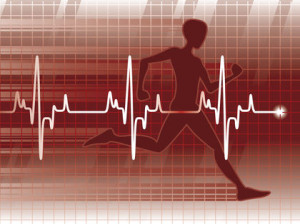Norvasc is an effective treatment for patients who are suffering from hypertension, angina and other cardio vascular diseases. The active agent of this drug is Amlodipine which relaxes the blood vessels and widens them so that there will be no restriction in the blood flow. Taking therapeutic doses of this drug will effectively give relief to patients afflicted with high blood pressure and its related diseases.
Norvasc Indications and Treatments
Numerous clinical studies and medical experiments have already proven the efficacy of Norvasc in treating diseases related to hypertension and high blood pressure. Here are some of its indications and their corresponding Norvasc therapy.
Hypertension
 Norvasc is specifically effective in the treatment of hypertension because of its ability to lower blood pressure. By lowering your blood pressure, you will also reduce your risks of fatal and nonfatal cardiovascular incidents such as strokes and myocardial infarctions.
Norvasc is specifically effective in the treatment of hypertension because of its ability to lower blood pressure. By lowering your blood pressure, you will also reduce your risks of fatal and nonfatal cardiovascular incidents such as strokes and myocardial infarctions.
Controlling high blood pressure should be a vital part of a comprehensive cardiovascular risk management, aside from lipid control, antithrombotic therapy, exercise, diabetes management, limited sodium intake and complete cessation of smoking.
Randomized controlled trials have shown that it is Norvasc’s ability to reduce blood pressure and not some other pharmacological property that is largely responsible for its benefits. The most consistent outcome and the greatest benefit of this drug is the reduction of the risk of stroke. In addition, the reductions in myocardial infarction and cardiovascular mortality have also consistently appeared in clinical trials.
One good thing about Norvasc is that it can be used in combination with other antihypertensive agents.
Coronary Artery Disease
There are three types of CAD that can be effectively treated with Norvasc.
- Chronic Stable Angina – Norvasc can be indicated for the symptomatic treatment of chronic stable angina. It can be used alone or together with other antianginal agents.
- Vasopatic Angina (Prinzmetal’s or Variant Angina) – Norvasc can also be indicated for confirmed or suspected vasopatic angina. It can be used alone or with other antianginal agents.
- Angiographically Documented Coronary Artery Disease – for patients with recently diagnosed CAD by angiography and without heart failure, or an ejection fraction of less than 40%, Norvasc can be indicated. This will reduce the risk of the patient being hospitalized for angina. Additionally, this will also reduce the risk of coronary revascularization procedure.
Use of Norvasc in Specific Types of People
There are certain considerations for certain types of people that must be followed when taking Norvasc.
- Pregnant women – although there are no adequate and well-controlled studies involving pregnant women, Norvasc can be used during pregnancy, but only if the benefits will justify the risks.
- Nursing Mothers – there is no study that shows whether amlopidene, the generic name of Norvasc is excreted in a mother’s milk. In order to be safe, it is recommended for nursing mothers to discontinue nursing her baby if she is undergoing Norvasc therapy.
- Seniors – the clinical studies of Norvasc did not include sufficient numbers of people over 65 years old. Other clinical studies did not find any significant difference between the Norvasc reactions of the young to those of the elderly. In order to be safe, doses for elderly patients should be more cautious than those of the younger set. Factors like decreased hepatic, renal, or cardiac function must be taken into account for any Norvasc therapy for the seniors.
- Children – Clinical studies have shown that Norvasc is effective in reducing blood pressure for patients who are 6 to 17 years old. Outside of this age group, it is not recommended because Norvasc’s effect on the blood pressure of very young children is not known.
Considerations before Taking Norvasc
You should consult with your doctor before taking Norvasc tablets.
- Tell your doctor about any prescription and non-prescription drugs that you are taking. These include alternative medicines and natural or herbal products.
- Tell him if you ever had heart disease, or liver disease.
- Tell him if you are pregnant, or planning to get pregnant.
- Tell him if you are breast feeding.
All these pertinent information will help your doctor determine if Norvasc is the best medicine to lower your blood pressure.
Norvasc Administration
Generally, Norvasc dose for adults with hypertension is 5 mg once a day and the maximum is 10 mg once a day. Elderly patients and those who are fragile and small can be given a minimum dose of 2.5 mg at the start, once a day. This amount should be used when adding Norvasc to other antihypertensive treatment. This dose can be adjusted according to the blood pressure goals. Basically, the patient has to wait 7 to 14 days between titration steps.
You can only titrate faster if it is clinically warranted, and only if the patient is frequently monitored. For angina patients, the recommended dose is 5 to 10 mg, if he is suffering from chronic stable or vasopastic angina. Most patients can tolerate 10 mg if they want a more effective treatment. For coronary artery disease, the recommended dosage is also 5 to 10 mg per day.
Share This